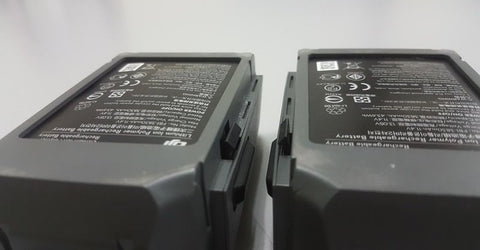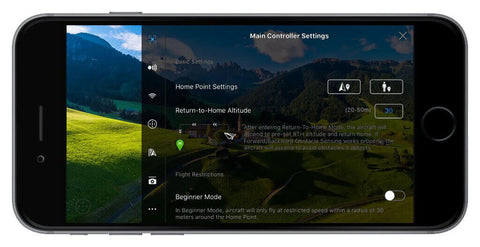Introduction
Using a drone to take new and exciting images of scenery is something that has gained a great level of popularity in recent years. Aerial photography is now a widely accepted way of delivering unique perspectives that offer something completely different to conventional photography, whether it's a new angle of a building, a panorama of a cityscape, or a top down shot of a particular tourist spot.
This increase in popularity also means that extra caution is required to minimize safety risks to yourself and those around you, even before your drone has left the ground. In order to help you understand the precautions you can take before you even lift off, the Beyond Visuals team has pooled their collective experience to offer you ten tips you should take note of. We hope that these tips will help you in your journey to improve your drone photography, potentially saving you a lot of trouble and hassle that we have experienced in the past.
10 tips you need to know before you fly
1. Check your batteries
Damaged or bloated batteries are one of the biggest risks to safe drone flight and, in the worst case scenario, can result in your drone dropping out the sky. Before you even pack your batteries you should check for charge, damage and bloating. Depending on where you live and how old your batteries are, they may be susceptible to bloating, leading to a lower usage time and risk of popping out the drone mid flight. If your batteries are like this, get in touch with your drone maker or purchase new ones to replace the damaged ones.

2. Check your return to home elevation
Probably one of the biggest causes of lost drones, forgetting to check your return to home elevation before you fly is essential depending on the surrounding environment. If your drone loses signal, ascending to the specified height can help you regain it quickly and efficiently, reducing the chance of never getting your drone back. Before you fly, check for high buildings, trees, structures, anything else that might get in the way and set your return to home height accordingly. If you are a nervous flyer, set your return to home height at 500m (max. altitude) and leave a little extra battery time to allow the drone to elevate and return home.

3. Wait for GPS and always calibrate your compass
Usually a rookie mistake, but one that we've all done. Getting too eager and taking off with your drone in ATTI mode is more acceptable in a wide, open space, but before the drone obtains a GPS signal there is a high chance it will drift and move, making it harder to control and increasing the risk of a crash. Wait for your drone to have a good GPS signal and always calibrate the compass. If you lose GPS mid flight, calmly bring your drone back towards you and land it safely.
4. Multiple micro SD cards for all eventualities
This tip is one we don't see mentioned a lot, but can help save valuable footage. Treat each flight like it's your last, that means when you change your batteries, also change your SD cards, so that if anything happens to your drone, you still have previous content captured and safely stored in your bag. Obviously this requires purchasing multiple micro SD cards, but these come at a relatively low cost compared to lost footage. Have three or four micro SD cards on hand to switch out, just in case. We'd recommend micro SDs like Samsung Evo 128GB as a cheap, reliable option.

5.Check your drone for damage
You're a pilot (Harry), and that means carrying out pre--flight checks. Check for propeller damage, sensor damage, gimbal issues, any odd noises, anything that is out of the ordinary. If you think something is seriously wrong, don't take the flight and get your drone checked before your next flight. If you suspect that it is a minor fault, have your drone hover at a safe distance to see if any warnings or notifications pop up. If they do, solve accordingly, or as stated, get your drone checked.
6. Be aware of your surroundings
Bit of a no brainer this one, but also a point that people often neglect, especially after a few years of flying a drone. Taking off in tight spaces is sometimes required, but you should always do your best to minimize obstacles in your surrounding environment on both take off and landing.
7. Weather conditions - the forecast is your friend
No one is an expert at predicting the weather - there are weather services available that will tell you a typhoon is on the way when the sun is still shining outside, but that doesn't mean you should neglect weather sources entirely - always check, and check multiple sources just to be sure. Checking the weather forecast before your flight can save a lot of disappointment, early wake ups, unnecessary journeys and, in most cases, lost drones. Yes, wind speed is a key factor in ensuring that your drone makes it back to you - if you don't look at and account for high wind speeds when flying, you might have to kiss your drone goodbye. Actually, no kisses, it will already be gone. If you want to check weather before you fly, the Beyond Visuals team recommend apps like Windy or UAV Forecast to check the weather conditions in your area.
8. Charge your remote
Obvious, but also neglected. You can't fly your drone without that thingy in your hand, no your other hand - the remote control. Before you set off (usually the night before) ensure a complete charge, or if you're low on juice, charge your remote on the way to your destination using a battery pack, or in worst case scenarios, one of your drone batteries.
9. Look for other drones
Before you even fly, check who else is flying in the area - there is more chance of a crash if you're in close proximity to other drone pilots. If you're flying with friends, communicate regularly about your height and distance - going for similar angles is all well and good until another drone gets a bit too close.
10. Watch out for air traffic
Slightly different to point 9, this means looking out for any other air traffic that could present a danger to you or the people around you. Be aware of the local laws and NFZ boundaries - if you are allowed to fly, be aware of your flight and proximity to risky areas.

And there you have it! Ten things we hope will help you with your drone piloting in the future - if you found this article useful and want to see more tips and tricks, please do let us know, and don't forget to follow our Instagram for more content to take your photography beyond visuals.
Thanks,
The Beyond Visuals Team 

